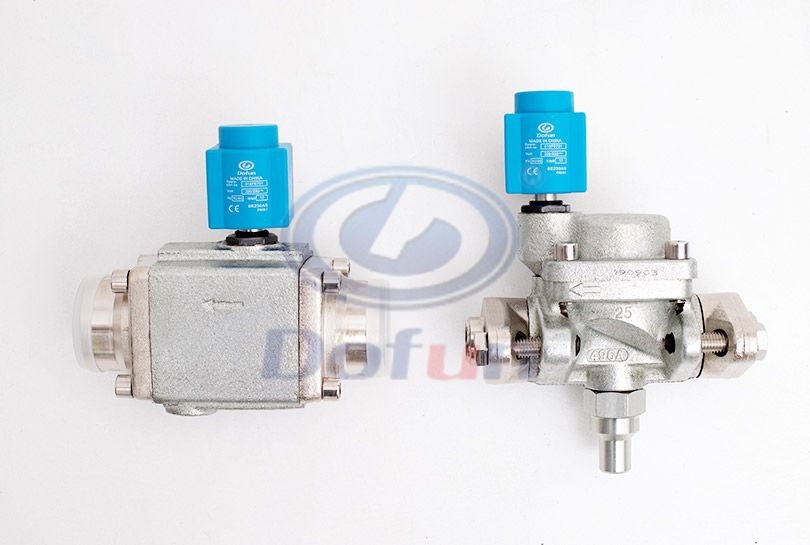The Solenoid valve is used to control the direction of the fluid automation basic components, belong to the actuator; usually used in mechanical control and industrial valves above, the direction of the medium to control, so as to achieve the control of the valve switch.
The solenoid valve has a closed cavity with holes at different locations, each hole leads to a different oil pipe, the middle of the cavity is the valve, the two sides are two electromagnets, which side of the magnet coil energized valve body will be attracted to which side, through the control of the movement of the valve body to block or leak different oil discharge hole, and the oil inlet hole is always open, the hydraulic oil will enter the different discharge pipe, and then through the pressure of the oil to push the piston of the cylinder, the piston drives the piston rod, the piston will drive the piston. The piston drives the piston rod, and the piston rod drives the mechanical device. This controls the mechanical movement by controlling the current of the solenoid.

Solenoid valve failure will directly affect the action of the switching and regulating valve, common failures have solenoid valve does not operate, solenoid valve supplier believe that the following four aspects can be investigated.
(1) Air leakage: air leakage will cause insufficient air pressure, making it difficult to open and close the forced valve, due to damage to the sealing gasket or slide valve wear and tear caused by several cavities scurrying air. In dealing with the switching system of the solenoid valve failure, should choose the appropriate time, and so the solenoid valve in the loss of power to deal with, if the processing is not completed within a switching gap, the switching system can be suspended, from the processing.
(2) Solenoid valve stuck: solenoid valve slide sleeve and spool with a small clearance (less than 0.008mm), generally single-piece assembly, when there are mechanical impurities brought in or too little lubricant, it is easy to jam. Treatment available steel wire from the head of the small hole stabbed into so that it pops back. The fundamental solution is to remove the solenoid valve, take out the spool and spool sleeve, clean with CCI4, making the spool flexible in the valve sleeve action. Disassembly should pay attention to the assembly order of the components and external wiring location, so as to reassemble and wiring correct, but also to check whether the oil mist spray hole is blocked, whether the lubricant is sufficient.
(3) Solenoid valve terminals loose or wire off, the solenoid valve shall not electricity, can tighten the wire.
(4) The solenoid valve coil burned, you can remove the wiring of the solenoid valve, measured with a multimeter, if the open circuit, the solenoid valve coil burned. The reason is that the coil is damp, causing bad insulation and leakage of magnetism, resulting in excessive current in the coil and burned, so to prevent rain into the solenoid valve. In addition, the spring is too hard, the reaction force is too large, the number of turns of the coil is too small, the suction force is not enough can also make the coil burned. Emergency treatment, the manual button on the coil from the normal operation of the "0" bit to "1" bit, so that the valve open.